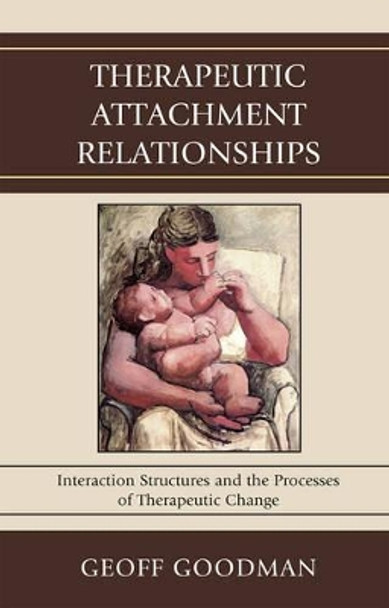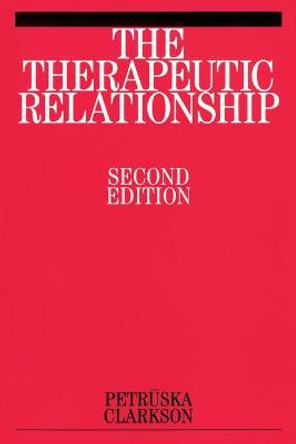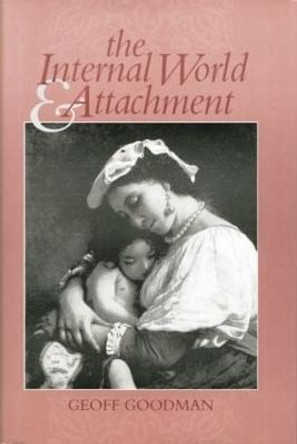Description
About the Author
Geoff Goodman, PhD, is associate professor of psychology at Long Island University. He is also a licensed clinical and school psychologist with a private practice in Manhattan and New City, New York, and is certified by the American Board of Professional Psychology (ABPP). He is the author of more than a dozen articles on the development of psychopathology in high-risk infants, children, and adults, as well as The Internal World and Attachment (2002).
Reviews
Starting with a provocative analysis of how Freud's own attachment problems limited his ideas on technique, Goodman reviews the psychotherapy literature through the lens of attachment theory, then proposes an integrative model of why some patients and therapists just seem to 'click.' -- James W. Hull, PhD Private Practice, New York, private practice, New York
This book is a sequel to Goodman's two-volume Transforming the Internal World and Attachment (2010), in which he reviews theoretical and empirical perspectives of therapeutic change and linked psychodynamic and attachment perspectives in an effort to clarify processes involved in patient-therapist interaction. Here Goodman (Long Island Univ.) looks at how the attachment history of the therapist may play a key role in the therapeutic process. The book starts with a review of a selection of Freud's writingsand his personal history, making the case that Freud's predominant attachment relationship contained dismissing features that became components of his model for conducting psychoanalysis. Goodman then presents the caregiver-infant attachment relationshipas a metaphor for the therapist-patient relationship. He introduces the principle of noncomplementarity as a potential means for the therapist to provide a 'gentle challenge' that assists the patient in developing new modes of regulating affect and relating to others. The author addresses empirical means of assessing the effectiveness of this strategic approach. In sum, Goodman presents a model for understanding how four potential interaction structures, which develop from the secondary attachment strat * CHOICE, September 2010 *
Geoff Goodman is that rare psychologist-psychoanalyst who imbues a rich understanding of the clinical process with a skillful working knowledge of clinical research for conceptualizing attachment theory and its therapeutic implications. Attachment theoryis arguably the most important new development in contemporary psychoanalytic thinking, and Therapeutic Attachment Relationships and its related volumes are superb examples of the most creative clinical thinking in this field. Building on his earlier book on object relations and attachment theories, Goodman here extends the model of the caregiver-infant attachment relationship to explain how dissimilar, noncomplementary attachment configurations in therapist-patient relationships may promote more favorable treatment outcomes than closely matched attachment patterns between therapists and patients. He demonstrates how therapists' and patients' complementary and noncomplementary deactivating and hyperactivating attachment strategies produce four distinctive therapist-patient interaction structures that are clinically important to recognize and understand, while at the same time serving an important heuristic purpose for empirical examination. This is a creative and bold conceptualization of attachment -- Marshall L. Silverstein, PhD, Long Island University
Geoff Goodman is that rare psychologist-psychoanalyst who imbues a rich understanding of the clinical process with a skillful working knowledge of clinical research for conceptualizing attachment theory and its therapeutic implications. Attachment theory is arguably the most important new development in contemporary psychoanalytic thinking, and Therapeutic Attachment Relationships and its related volumes are superb examples of the most creative clinical thinking in this field. Building on his earlier book on object relations and attachment theories, Goodman here extends the model of the caregiver-infant attachment relationship to explain how dissimilar, noncomplementary attachment configurations in therapist-patient relationships may promote more favorable treatment outcomes than closely matched attachment patterns between therapists and patients. He demonstrates how therapists' and patients' complementary and noncomplementary deactivating and hyperactivating attachment strategies produce four distinctive therapist-patient interaction structures that are clinically important to recognize and understand, while at the same time serving an important heuristic purpose for empirical examination. This is a creative and bold conceptualization of attachment theory and treatment process that is simultaneously sophisticated and rich. It represents one of the most important formulations in the field today. -- Marshall L. Silverstein, PhD, Long Island University
This book is a sequel to Goodman's two-volume Transforming the Internal World and Attachment (2010), in which he reviews theoretical and empirical perspectives of therapeutic change and linked psychodynamic and attachment perspectives in an effort to clarify processes involved in patient-therapist interaction. Here Goodman (Long Island Univ.) looks at how the attachment history of the therapist may play a key role in the therapeutic process. The book starts with a review of a selection of Freud's writings and his personal history, making the case that Freud's predominant attachment relationship contained dismissing features that became components of his model for conducting psychoanalysis. Goodman then presents the caregiver-infant attachment relationship as a metaphor for the therapist-patient relationship. He introduces the principle of noncomplementarity as a potential means for the therapist to provide a 'gentle challenge' that assists the patient in developing new modes of regulating affect and relating to others. The author addresses empirical means of assessing the effectiveness of this strategic approach. In sum, Goodman presents a model for understanding how four potential interaction structures, which develop from the secondary attachment strategies of both members of the therapeutic dyad, may have a profound impact on the outcome of therapy. Recommended. * CHOICE, September 2010 *
Book Information
ISBN 9780765707451
Author Geoff Goodman
Format Hardback
Page Count 144
Imprint Jason Aronson Publishers
Publisher Jason Aronson Publishers
Weight(grams) 393g
Dimensions(mm) 239mm * 164mm * 16mm








